For governments trying to hide controversial programs from their residents, there are few better directions to transmit secret military & spy communications than straight up. Unlike here on earth, no pesky amateur radio eavesdroppers or curious hackers monitor the open sky between ground control and a drone—not to point out between that drone and its communication satellite perched even more kilometers higher up.
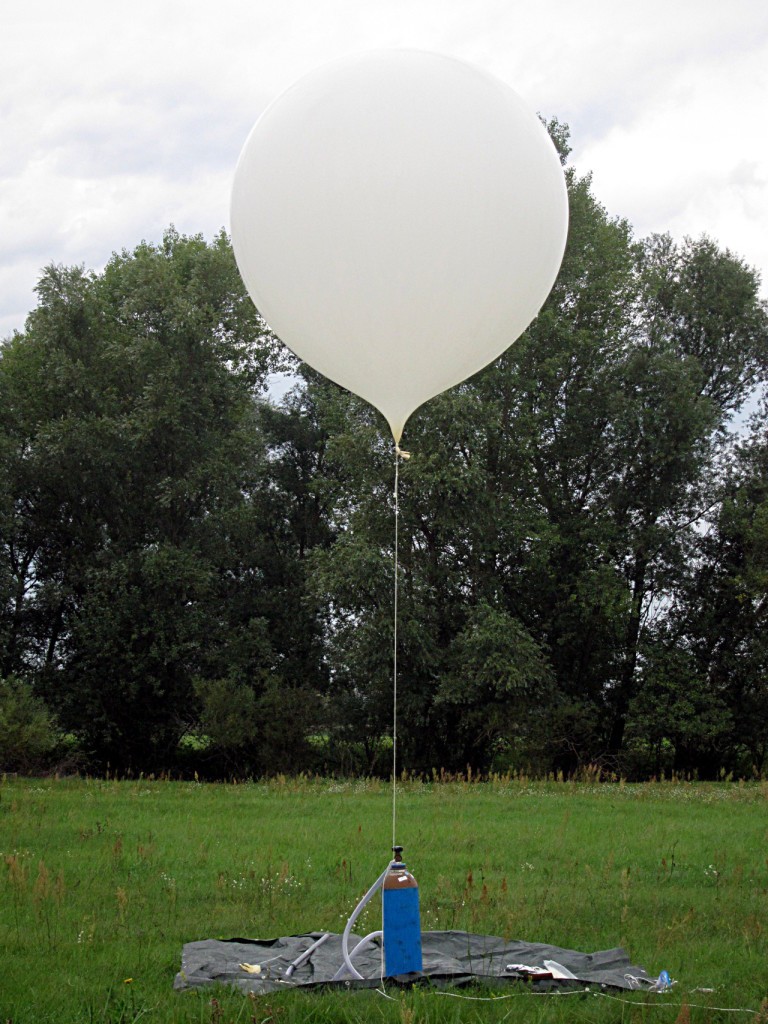
One small crew of hackers is attempting to pierce that stratospheric secrecy zone with a high-altitude flying, or floating, machine of their own. The three members of a socially motivated movement of technologists referred to as Critical Engineering have developed and begun testing an “aerospace probe” they named the Deep Sweep. The invention, described in their own detailed write-up, is a 1-foot-diameter acrylic orb full of radio tools and connected to a 2.5-foot diameter helium-filled weather balloon. As it floats up more than 24 kilometers (15 miles) into the earth’s atmosphere, the probe’s antennae are designed to record a wide range of radio data to be analyzed when the probe is recovered hours or days later. The undertaking’s objective: to pioneer a brand new type of public, crowd-sourced data collection for monitoring the communications of a secret layer of government sky machines—UAVs aka drones, satellites and high-altitude planes.
“The core aim of the project is to build a low-cost platform for high-altitude signals intelligence for the rest of us,” says Julian Oliver, a Berlin-based artist and hacker who launched the venture together with fellow creators Bengt Sjöle & Danja Vasiliev. “It’s about creating an interface to read the signals in the skies above us, to understand what’s happening up there.”
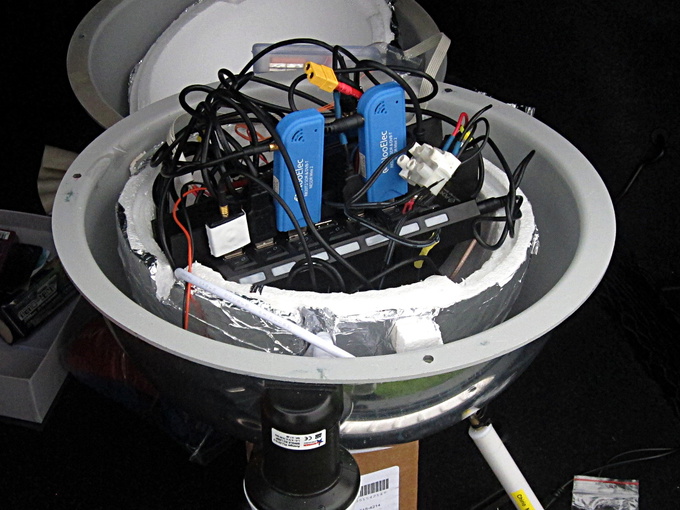
The group’s DIY probe was constructed with three software defined radios, three antennae all listening to different parts of the radio frequency spectrum, a GoPro camera, a GPS module, temperature and pressure sensors, a SIM card for communicating with the crew through SMS, and an insulated battery. All of that’s integrated with an Arduino board, a USB hub, an Intel Edison minicomputer and open-source software program. The cheap design is meant to encourage other amateurs to construct high-flying probes of their own: Oliver says the complete setup cost less than $300—although they hope to use even cheaper parts in future versions—with another $200 for the balloon plus the helium to fill it.
As a final touch, the group constructed the orb’s shell from a pair of parabolic mirrored surveillance camera covers—the sort used on the ceilings of retail stores and banks. “We thought that suited the project very nicely,” Oliver says.

To this point, the Critical Engineers have staged two test-launches of their spy balloon. Here’s the way it works: When the probe rises to an altitude of around 30 kilometers (18.6 miles), low atmospheric air pressure causes the balloon carrying it to burst (after expanding to almost 10 times its original size). Then the probe releases a nylon parachute and floats safely back to earth. Once it’s back in cell tower range, it sends a text message to its creators signaling its arrival and sharing its landing location.
The tests had mixed outcomes. Its first balloon flight from the eastern German city Frankfurt in August landed in a Polish field. When they tracked down and recovered the machine after a long, pre-dawn drive, they discovered that its energy source had failed just seven minutes into the flight, cutting short its data collection.
Their second launch later in the same month was more fruitful, despite a different set of issues: They released the balloon from Magdeburg, Germany, anticipating that it will again land in Poland. Instead, during a long interval when the probe lost cell signal, the wind pulled it more more than a 1000 kilometers (~600 miles) east, at some points dragging it through the sky as fast as 140 km/h (87 m/hr). “It was a bit of a desperate feeling,” says Oliver. “You get quite hooked up to the thing. After we finally received an SMS from it the next morning, we were very happy.”
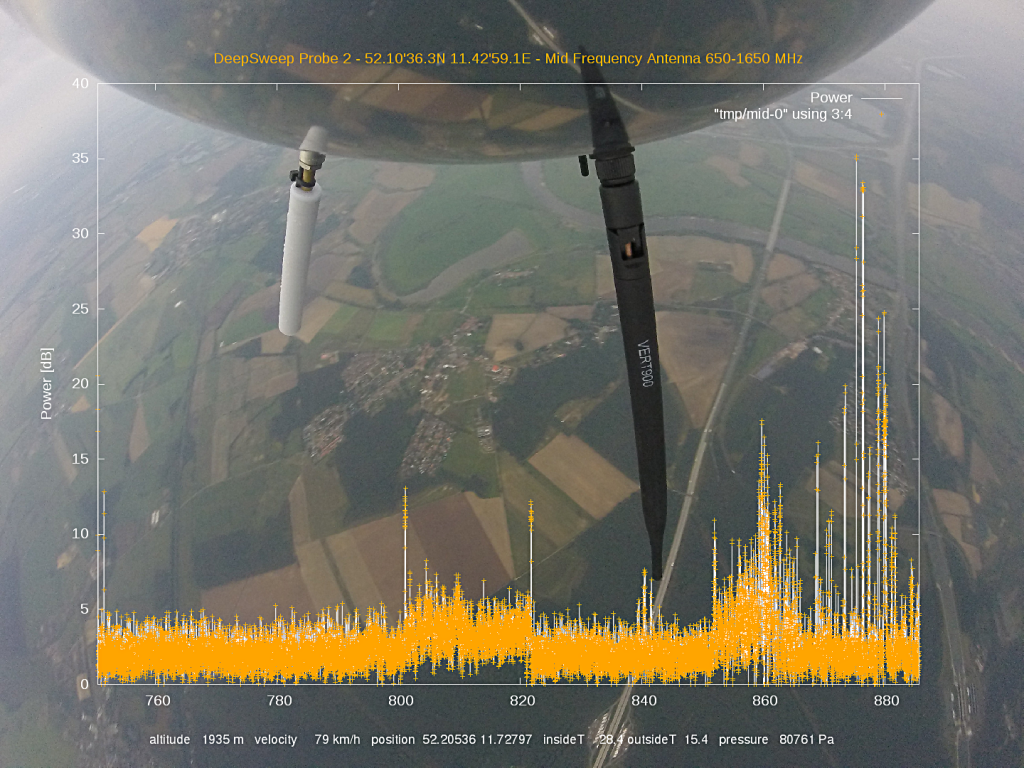
The probe had landed in a cornfield close to Minsk, Belarus. Since Belarus’s dictatorship doesn’t maintain an open border with the EU, the crew needed to enlist the assistance of a buddy with Belarusian contacts to rescue it. Despite their initial suspicions that the shiny sphere’s creators were state spies rather than amateur hackers, a Belarusian couple finally retrieved the probe and offloaded its data over the Internet to Critical Engineering’s server in Sweden. (One of the two Belarusians traveled this month to Stockholm via a ferry from Estonia to deliver the probe back to its owners).
The info from that first successful test-flight, accessible here and constructed into a set of data visualizations here, is meant to be the start of a public, crowd-sourced collection. Oliver says the group plans to create a wiki for publishing the results of any future probe launches, both those by his Critical Engineering team and anybody else who launches a stratospheric radio balloon of their own.
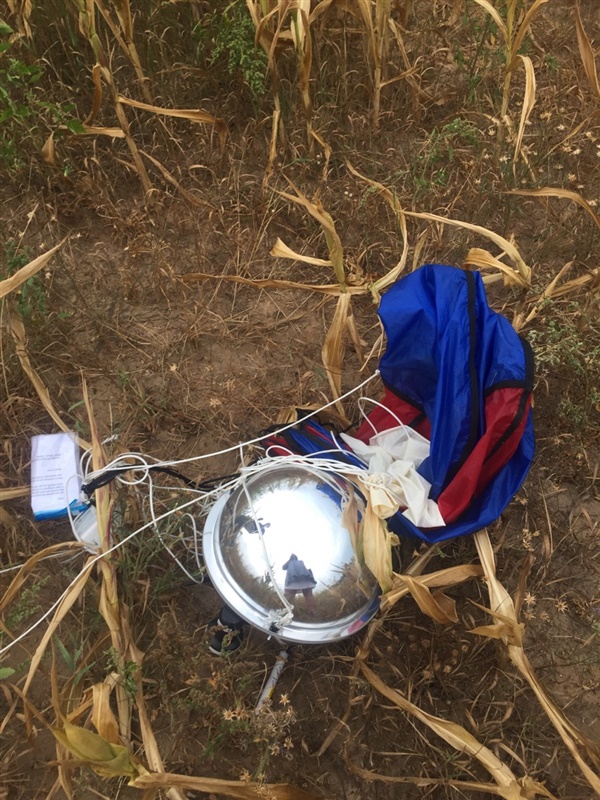
And just what do Deep Sweep’s creators think they’ll discover in their probe project’s potential trove of radio information? Oliver says they hope to pick up threads of conversation between government agencies and flying machines that range from Predator and Reaper drones to spy satellites like those launched by the U.S.’s secretive National Reconnaissance Office. Those radio conversations are no doubt encrypted, and Oliver says the group has no illusions that they’ll be capable of peering into the content of the communications. However they do hope they’ll ultimately have the ability to at least recognize the presence of secret sky gadgets talking to satellites overhead or the ground below, and even possibly learn to “fingerprint” and distinguish them.
Oliver hopes that the Deep Sweep project might be the start of a new amateur community of high-altitude radio fanatics who monitor the radio frequencies of the sky the same way that Ham radio hobbyists have monitored and transmitted ground-based communications for years.
“What the Ham radio scene does here on earth…we wish to do the same thing at the fringe of space. Because that’s where a hell of a lot of really fascinating and dubious things are taking place,” says Oliver. “There’s no other way of getting to the bottom of it all than by getting up there.”


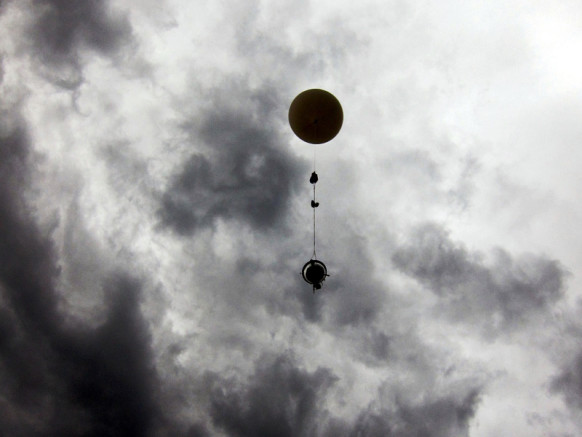











[…] Source: Deep Sweep Launched by Hackers to Spy on Drones […]
[…] Source: Deep Sweep Launched by Hackers to Spy on Drones […]